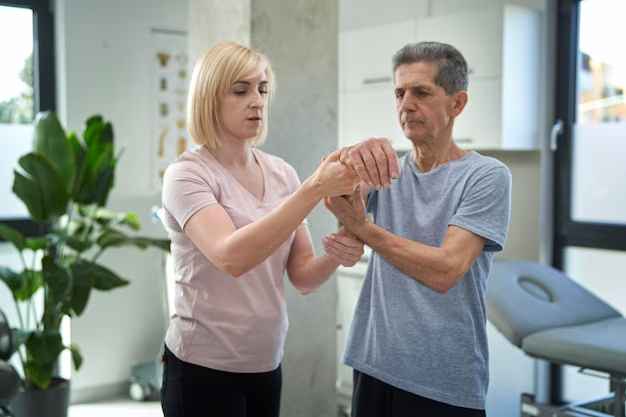Understanding Arthritis: A Comprehensive Guide to Its Various Types
When we hear the word "arthritis," many of us might think it's just one condition. In reality, arthritis is an umbrella term covering over a hundred different disorders affecting joints or tissues around the joints. While arthritis is often associated with aging, it affects people of all ages and backgrounds, manifesting in various forms. Knowing these types can help in understanding their impact, how they differ from each other, and what practical steps might favorably manage symptoms. 🌟
🤔 What is Arthritis?
Arthritis is fundamentally an inflammation of the joints. This inflammation can bring about pain, swelling, stiffness, and decreased range of motion. Over time, the condition can cause permanent joint damage. While some types of arthritis are caused by wear-and-tear or injuries, others may result from genetics, infections, or an overactive immune system.
🏷️ Common Types of Arthritis
Osteoarthritis (OA)
Osteoarthritis is the most common form of arthritis, often referred to as "wear-and-tear" arthritis. As cartilage — the slippery tissue that covers the ends of bones in a joint — breaks down, osteoarthritis develops.
Characteristics:
- Pain and Stiffness: Particularly noticeable after overuse or periods of inactivity.
- Common Zones: Hands, knees, hips, and spine.
- Progression: Gradual worsening over time, with varying levels of severity.
Rheumatoid Arthritis (RA)
Rheumatoid Arthritis is an autoimmune disorder where the immune system mistakenly attacks the joints, leading to inflammation.
Characteristics:
- Symmetrical Symptoms: Pain and inflammation often occur on both sides of the body.
- Affect on the Body: Can also affect other systems, such as the skin, eyes, and blood vessels.
- Flare-Ups: Periodic intensification of symptoms with interspersed periods of relative remission.
Psoriatic Arthritis
People living with psoriasis, a condition marked by scaly skin patches, might develop Psoriatic Arthritis.
Characteristics:
- Joint Symptoms: Similar to rheumatoid arthritis, along with joint swelling and morning stiffness.
- Skin Involvement: Often correlated with the level of skin psoriasis.
- Nails: Can cause nail pitting or separation from the nail bed.
Gout
Gout is a form of arthritis characterized by sudden, severe attacks of pain, redness, and tenderness, usually in the big toe.
Characteristics:
- Uric Acid: Build-up in the blood leads to crystal formation in joints.
- Diet Influence: Seafood, red meats, and the over-consumption of alcohol, especially beer, can trigger gout.
- Intermittent Episodes: Intense attacks often subside over days to weeks.
Ankylosing Spondylitis
This type of arthritis primarily affects the spine, although it can affect other joints.
Characteristics:
- Pain and Stiffness in the Spine: Especially in the lower back and hips.
- Progressive Fusion: New bone formation can lead to fusion of the vertebrae, impacting posture.
- Young Adults: Tends to affect individuals in early adulthood.
🔍 Less Common Types Worth Noting
Juvenile Idiopathic Arthritis (JIA)
Juvenile Idiopathic Arthritis affects children under the age of 16, characterized by persistent joint inflammation.
Characteristics:
- Wide Range: Various types, each affecting growth and bone development differently.
- Symptoms: Swelling, pain, and stiffness, sometimes accompanied by fevers and rashes.
- Long-term Outlook: Many children outgrow arthritis, but it can continue into adulthood.
Reactive Arthritis
Triggered by an infection elsewhere in the body, Reactive Arthritis was previously known as Reiter's syndrome.
Characteristics:
- Triad of Symptoms: Arthritis, inflammation of the eye (conjunctivitis), and urinary tract inflammation.
- Post-Infection: Often follows infections of the genital, urinary, or digestive systems.
- Temporary: Symptoms typically last for several months.
📚 Practical Management Approaches
General Lifestyle Adjustments
- Exercise Regularly: Engage in low-impact exercises like swimming or cycling to maintain joint function and flexibility.
- Weight Management: Maintaining a healthy weight reduces stress on joints, particularly those in the lower body.
- Dietary Considerations: Emphasize anti-inflammatory foods like fish, nuts, fruits, and vegetables, while moderating red meat and alcohol intake.
- Adequate Rest: Ensure sufficient rest to manage fatigue, especially during flare-ups.
Complementary Practices
- Physical Therapy: Tailored exercises can help improve range of motion and alleviate stiffness.
- Hot and Cold Treatments: Alternating heat and cold applications can relieve pain and inflammation.
- Mind-Body Techniques: Practices such as tai chi, yoga, or meditation can foster a better mental outlook and help cope with pain.
🚦 Key Takeaways Summary with Emojis
- 🌐 Diverse Conditions: Over a hundred types of arthritis exist, each with unique characteristics.
- 🔥 Common Types: Osteoarthritis, rheumatoid arthritis, psoriatic arthritis, gout, and ankylosing spondylitis are among the most prevalent.
- 🏋️ Lifestyle Role: Regular exercise, a healthy diet, and weight management can significantly impact symptom management.
- ⏱️ Staying Vigilant: Monitor symptoms to detect any progression or changes.
- ⚕️ Professional Consultation: While lifestyle adjustments are vital, consulting health professionals for diagnosis and personalized management strategies is crucial for effective care.
Understanding the variety in arthritis types empowers individuals to make informed decisions about their health, allowing for more personalized and effective management strategies. Embracing lifestyle modifications, staying informed, and seeking professional guidance can contribute to reducing the impact arthritis has on daily life. 🌈
